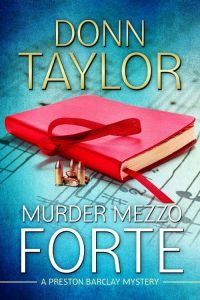A Lesson from the Classics
Today’s guest is Donn Taylor, a poet, a writer of mysteries, suspense,  and historical novels as well as essays on writing, ethical issues, and U.S. foreign policy. Wow. He taught English literature for eighteen years following service in the Korean and Vietnam wars and work with air reconnaissance in Europe and Asia.
and historical novels as well as essays on writing, ethical issues, and U.S. foreign policy. Wow. He taught English literature for eighteen years following service in the Korean and Vietnam wars and work with air reconnaissance in Europe and Asia.
A Lesson from the Classics
It’s no surprise that we writers learn much from literary classics, but in this blog I’ll look at the way one classic handles a problem we have to deal with in every story, namely, the problem of portraying evil. For even the most escapist romantic fantasy must portray some degree of evil. Without it, there can be no conflict, and conflict is the most essential ingredient of fiction.
 In Book I of his epic romance, The Fairie Queene, Edmund Spenser ( -1599) provides an exceptionally astute and subtle treatment of evil. Book I tells how the Redcrosse Knight (St. George) grew to become the Knight of Holiness. His mission is to go with the lady Una (Truth, una vera fides, the One True Faith) to slay a great dragon that is terrorizing her land. In the beginning he believes his own virtues give him strength enough to cope with evil, but a series of failed encounters teach him differently.
In Book I of his epic romance, The Fairie Queene, Edmund Spenser ( -1599) provides an exceptionally astute and subtle treatment of evil. Book I tells how the Redcrosse Knight (St. George) grew to become the Knight of Holiness. His mission is to go with the lady Una (Truth, una vera fides, the One True Faith) to slay a great dragon that is terrorizing her land. In the beginning he believes his own virtues give him strength enough to cope with evil, but a series of failed encounters teach him differently.
The figures of evil who divert Redcrosse are the woman Duessa (Falsehood) and Archimago, the Satanic maker of false images. Deceived by images of Una being unfaithful, Redcrosse deserts both her and his mission. Believing that his strength comes from his own virtue, he is led by Duessa into the House of Pride. From there he descends yet further until he encounters Despair, who shows him the half-truth of his own worthlessness, suggesting suicide. But Una (the full Truth) reappears and leads him through repentance to redemption in The House of Holiness. What he learns there equips him to fight the dragon.
Even then, Redcrosse falls several times during the three-day combat. But each time he falls, he comes back with greater strength until, at length, he kills the dragon. One might expect then a denouement of the story with all problems solved and everything in harmony.
But it is what the realistic Spenser actually does then that holds most interest for us as writers. There is no happily-ever-after. There is only better-than-things-were-before. Yes, some problems have been solved. That particular dragon is dead. The evil image-maker, Archimago, is in prison. (Internally, this allegorizes the supremacy of Reason over the false images of Imagination.) But Duessa (Falsehood) is still loose in the world. And Redcrosse must labor in that world for seven years before the marriage of Truth and Holiness can occur.
Spenser knew that in this world our victories over particular evils are always temporary, never final. We can only beat evil back until the next encounter. To avoid giving our readers false expectations, then, we should follow Spenser’s example and never portray evil as completely defeated. For evil will never suffer total defeat until the Second Coming.
In my novel The Lazarus File, for example, the conspiracy between  Colombian drug lords, guerrillas, and Soviet/Cuban subversion fails. Hero and heroine go on to new lives. But the primary drug lord remains unscathed and in full operation. In that novel’s sequel, Deadly Additive, the terrorist attack is prevented, but the godfather of international black market arms sales remains at large.
Colombian drug lords, guerrillas, and Soviet/Cuban subversion fails. Hero and heroine go on to new lives. But the primary drug lord remains unscathed and in full operation. In that novel’s sequel, Deadly Additive, the terrorist attack is prevented, but the godfather of international black market arms sales remains at large.
The writer’s objective, then, should be to provide a satisfactory solution to the immediate problem and give the reader a sense of aesthetic closure, yet leave a thread of evil for someone to deal with in the future. For Duessa is very much loose in our world today, and Archimago has apparently escaped from prison.
JIM: Folks, I’ve read several of Donn’s books, both his mysteries and his suspense books, and I can recommend them. Murder Mezzo Forte can be found on Amazon by clicking on the book cover above.
Donn’s website is at: www.donntaylor.com
Donn’s blog is at: http://authorculture.blogspot.com
And please leave a comment. Thanks.



